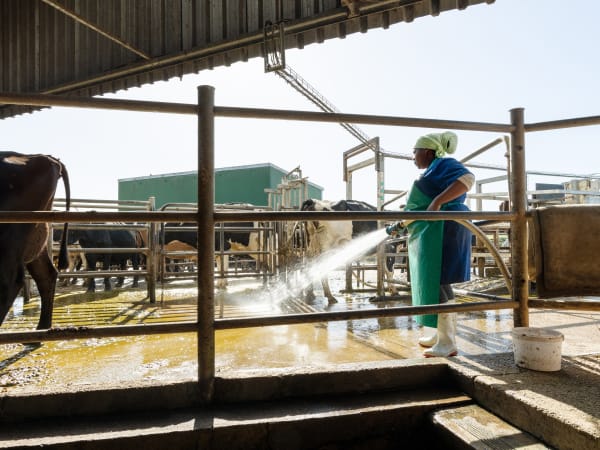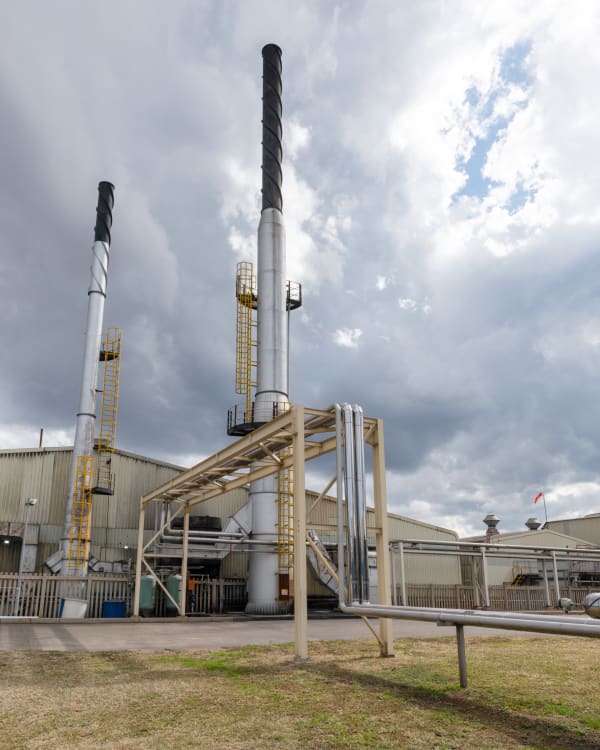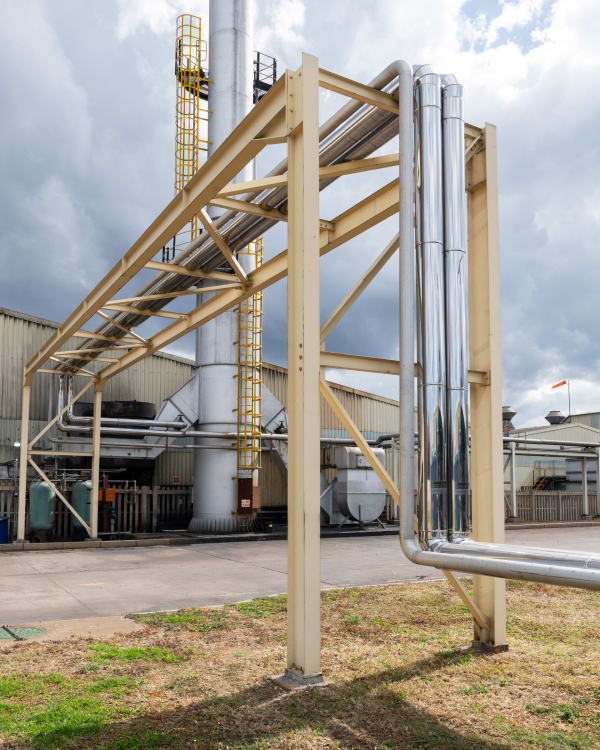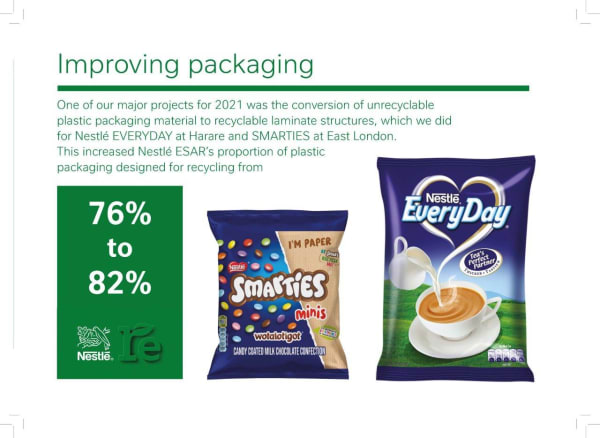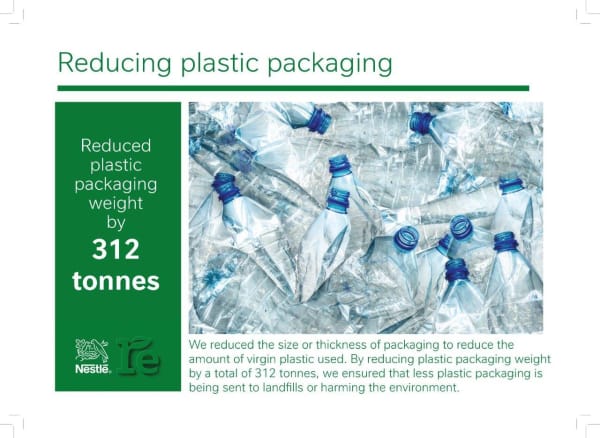The works in the show, FROM LINEAR TO CIRCULAR, capture some of the flagship initiatives in the Nestlé ESAR (East and Southern Africa Region) sustainability programme, called RE. RE is centred around three principles: REthink, REduce and REpurpose. It is intertwined with Nestlé ESAR’s business strategy and value creation model, to help the business meet its commitment of reaching net zero by 2050.
The partnership with Dillon Marsh focused on three pilot projects:
o RE-Imagine Tomorrow in Tembisa, Gauteng
o Skimmelkrans in George, Western Cape
o Project Infrasalience in Hammanskraal, Gauteng.
Dillon’s work explores human relationships with the environment, and central in his visual vocabulary is an interrogation of landscapes. In this work, he creates a convergence point between the initiatives, their seemingly mundane day-to-day activities, the landscapes they’re on and the vast expanse of the sky above. He brings a certain clarity to the role of singular activities, highlighting their overall contribution to the transition from linear to circular. Using computer generated imagery, he invades the landscape with imagined physical representations of gases and liquids, to profile the positive impact of the interventions on the environment.
From Linear to Circular captures some of Nestlé ESAR’s sustainability journey, and reports back on the impact so far, of some flagship RE initiatives. It connects big audacious ideas about shifting society, with the simple circular principles that are a call to cation: REthink, REduce, REpurpose. In this work, is a snippet of what is possible for our continent as we ponder on the transition From Linear to Circular.
-

-
Skimmelkrans
-

-
-

Here, the old dirt road leads the way to the future of dairy farming, carefully managing and monitoring operations in line with the best regenerative agriculture practices of the modern era.
-

With an eye on a brighter tomorrow, Skimmelkrans is working hard to restore nature’s balance, while looking after the beautiful creatures that graze on bright green pastures.
-

This planet does not belong to us alone. With every breath we take, we share in the natural bounties that sustain life. Keeping the air crisp, clean, and free of pollutants is essential to our survival. But our duty to care for the earth extends beyond our fellow humans. At Skimmelkrans, natural animal feed is used, water is conserved, to ensure the best nutrition for the herd, so that they in turn can produce the best milk. It’s a cycle of care and virtue that makes the earth go round.
-

The earth is mostly water, and so are we. Conserving and managing the way we use this precious liquid is crucial to keeping it flowing. Moreso in a water scarce country, made worse by climate change. Central to the pilot is also water conservation. The farm harvests rainwater, recycles water from operations, monitors the soil for water content, and irrigates using recycled water. The earth thirsts for better, smarter ways of repurposing the fuel of life. Every day, in every way possible, the pilot works on it.
-

The earth is mostly water, and so are we. Conserving and managing the way we use this precious liquid is crucial to keeping it flowing. Moreso in a water scarce country, made worse by climate change. Central to the pilot is also water conservation. The farm harvests rainwater, recycles water from operations, monitors the soil for water content, and irrigates using recycled water. The earth thirsts for better, smarter ways of repurposing the fuel of life. Every day, in every way possible, the pilot works on it.
-

The earth is mostly water, and so are we. Conserving and managing the way we use this precious liquid is crucial to keeping it flowing. Moreso in a water scarce country, made worse by climate change. Central to the pilot is also water conservation. The farm harvests rainwater, recycles water from operations, monitors the soil for water content, and irrigates using recycled water. The earth thirsts for better, smarter ways of repurposing the fuel of life. Every day, in every way possible, the pilot works on it.
-

By repurposing manure as a natural fertiliser, the farm reduces the amount of carbon released by commercial fertilizer. 1.36kg - the average mass of carbon released into the atmosphere for every 1kg of chemical fertiliser produced. Skimmelkrans has reduced its reliance on chemical fertiliser by 50%. Skimmelkrans is helping to keep the earth greener, cleaner, and safer for us all.
-

Let’s talk manure. For those of us who don’t live or work on a farm, it’s easy to see it simply as something you don’t want to step on. But at Skimmelkrans, manure is a vital natural resource that helps to nurture the land. Manure solids fertilise the land, while the liquids flow into the pastures as irrigation. 136 metric tons – the estimated annual mass of carbon captured by Skimmelkrans’ manure management process. That’s the meaning of sustainability — and that’s the power of manure!
-

The earth is mostly water, and so are we. Conserving and managing the way we use this precious liquid is crucial to keeping it flowing. Moreso in a water scarce country, made worse by climate change. Central to the pilot is also water conservation. The farm harvests rainwater, recycles water from operations, monitors the soil for water content, and irrigates using recycled water. The earth thirsts for better, smarter ways of repurposing the fuel of life. Every day, in every way possible, the pilot works on it.
-

Let’s talk manure. For those of us who don’t live or work on a farm, it’s easy to see it simply as something you don’t want to step on. But at Skimmelkrans, manure is a vital natural resource that helps to nurture the land. Manure solids fertilise the land, while the liquids flow into the pastures as irrigation. 136 metric tons – the estimated annual mass of carbon captured by Skimmelkrans’ manure management process. That’s the meaning of sustainability — and that’s the power of manure!
-
 Dillon Marsh, Skimmelkrans 11, 2022
Dillon Marsh, Skimmelkrans 11, 2022 -

By repurposing manure as a natural fertiliser, the farm reduces the amount of carbon released by commercial fertilizer. 1.36kg - the average mass of carbon released into the atmosphere for every 1kg of chemical fertiliser produced. Skimmelkrans has reduced its reliance on chemical fertiliser by 50%. Skimmelkrans is helping to keep the earth greener, cleaner, and safer for us all.
-

Let’s talk manure. For those of us who don’t live or work on a farm, it’s easy to see it simply as something you don’t want to step on. But at Skimmelkrans, manure is a vital natural resource that helps to nurture the land. Manure solids fertilise the land, while the liquids flow into the pastures as irrigation. 136 metric tons – the estimated annual mass of carbon captured by Skimmelkrans’ manure management process. That’s the meaning of sustainability — and that’s the power of manure!
-

What can and should we do to save the earth for future generations? We can begin by using the land wisely and being aware of the effect we have on its delicate balance. 10 metric tons – the estimated mass of carbon captured in the ground in each hectare through the process of crop photosynthesis and sequestration. Skimmelkrans is 600 hectares in size and would therefore capture 600 such masses of carbon each year.
-
-
 Dillon MarshSkimmelkrans 16, 2022True Fibre Giclee
Dillon MarshSkimmelkrans 16, 2022True Fibre Giclee
100 x 133 cmLife is a cycle that goes round and round, taking its cue from the shape and motion of the planet. In the same way, the business at Nestlé turns on circles of production and consumption, as we shift away from linear to circular. Here, tankers take milk from the dairy farm to use in the making NESTLÉ NESPRAY, NESTLÉ EVERYDAY, NESTLÉ CARAMEL TREAT, NESTLÉ SWEETENED CONDENSED MILK. It’s all part of the move towards net zero, as we strive to do better for the planet, better for our business, and better for use all.
-
RE-IMAGINE TOMORROW
-

-
-

In a fast-paced consumer society, where today’s goods and commodities become tomorrow’s discards and leftovers, waste is everybody’s problem. Each of us, in the course of our lives, will throw away about 900 times our body weight in waste. Imagine the difference that could make to the planet.
-

In the things we throw away, in the things we leave behind, in the things we no longer need, we leave a tangled legacy of the things we choose to consume. But we can choose, too, to rethink our habits as consumers, and to be more mindful of the impact of accumulated waste on the natural environment. What, in those heaps, can be REcycled? REused? REpurposed? There is value in waste, if we only take a moment to RE-Imagine its place in our lives.
-

Imagining a future free of waste means RE-Imagining the way waste is collected, managed, and processed. Street by street, neighbourhood by neighbourhood, community by community, informal waste-reclaimers are making a meaningful difference, going out of their way to solve a human problem on a human scale. In the process, they’re putting bread on their own tables, and reclaiming the dignity of a job worth doing, and worth doing well.
-

Imagining a future free of waste means RE-Imagining the way waste is collected, managed, and processed. Street by street, neighbourhood by neighbourhood, community by community, informal waste-reclaimers are making a meaningful difference, going out of their way to solve a human problem on a human scale. In the process, they’re putting bread on their own tables, and reclaiming the dignity of a job worth doing, and worth doing well.
-

Imagining a future free of waste means RE-Imagining the way waste is collected, managed, and processed. Street by street, neighbourhood by neighbourhood, community by community, informal waste-reclaimers are making a meaningful difference, going out of their way to solve a human problem on a human scale. In the process, they’re putting bread on their own tables, and reclaiming the dignity of a job worth doing, and worth doing well.
-

Imagining a future free of waste means RE-Imagining the way waste is collected, managed, and processed. Street by street, neighbourhood by neighbourhood, community by community, informal waste-reclaimers are making a meaningful difference, going out of their way to solve a human problem on a human scale. In the process, they’re putting bread on their own tables, and reclaiming the dignity of a job worth doing, and worth doing well.
-

Lightweight and flexible, fashioned from fossil fuels, plastic is one of the most versatile materials ever invented. But it’s also among the most durable and can linger in the environment for centuries after being discarded. The solution: REclaim it, REcycle it, REuse it, REpurpose it. RE-Imagine Tomorrow recycled almost 80 tons of assorted plastics in 8 months, to make a material difference to the world.
-

On paper, Nestlé’s RE-Imagine Tomorrow project may look like a dream: to create work, to uplift communities, and to generate value where once there was only waste. But paper is a form of value in and of itself, transforming into currency when it is collected, recycled, and reused. In 8 months, the project’s waste-reclaimers collected and tracked 4 tons of white paper, proving that dreams, when put to work, can turn a new leaf in the real world too.
-
-
 Dillon MarshTembisa 09, 2022True Fibre Giclee
Dillon MarshTembisa 09, 2022True Fibre Giclee
100 x 133 cmIf we learn to look at waste not as the last link in a broken chain of value, but as a resource waiting to be mined, refined, and commoditised, we can turn it into something that shimmers with hope and opportunity. That’s the vision that we value at the heart of RE-Imagine Tomorrow. To shift imagination into action calls for hard work, resilience, and partners — in government, business, and the public at large — who are unafraid to get their hands dirty.
-
-

By giving a hand-up to informal waste-reclaimers, Nestlé ESAR’s RE-Imagine Tomorrow project is helping to sow the seeds for a world where waste means business. The project enables 150 waste-reclaimers to earn an income, by connecting them with willing buyers through the Kudoti platform. In turn, the waste they gather can be recycled, reused, and repurposed, setting the wheels of the circular economy in motion.
-

By giving a hand-up to informal waste-reclaimers, Nestlé ESAR’s RE-Imagine Tomorrow project is helping to sow the seeds for a world where waste means business. The project enables 150 waste-reclaimers to earn an income, by connecting them with willing buyers through the Kudoti platform. In turn, the waste they gather can be recycled, reused, and repurposed, setting the wheels of the circular economy in motion.
-

By giving a hand-up to informal waste-reclaimers, Nestlé ESAR’s RE-Imagine Tomorrow project is helping to sow the seeds for a world where waste means business. The project enables 150 waste-reclaimers to earn an income, by connecting them with willing buyers through the Kudoti platform. In turn, the waste they gather can be recycled, reused, and repurposed, setting the wheels of the circular economy in motion.
-

By giving a hand-up to informal waste-reclaimers, Nestlé ESAR’s RE-Imagine Tomorrow project is helping to sow the seeds for a world where waste means business. The project enables 150 waste-reclaimers to earn an income, by connecting them with willing buyers through the Kudoti platform. In turn, the waste they gather can be recycled, reused, and repurposed, setting the wheels of the circular economy in motion.
-
-
 Dillon MarshTembisa 14, 2022True Fibre Giclee
Dillon MarshTembisa 14, 2022True Fibre Giclee
59 x 74 cmThe real hard work is bringing in the trash. For South Africa’s informal waste-reclaimers, the toil of trawling through society’s leave-behinds is only the first step in an arduous process of collecting, sifting, sorting, transporting, and selling. For Nestlé ESAR’s RE-Imagine Tomorrow project, waste-reclaimers are vital partners in a programme of sustainability that uplifts and empowers people, as much as it revitalises and rethinks the waste management industry.
-
Project Infrasalience
-

-
-

Reaching for the sky, the giant towers of Babelegi point the way to a cleaner, greener tomorrow. By capturing carbon during the final stages of production, the plant is pioneering a process of REduction, REcycling, and REpurposing that is setting a benchmark of best practice for the world.
-

Pipedreams are illusions, drifting into the ether on spirals of fantasy and hope. But here’s a pipe-fact for you to ponder: People can change the world. All we need to do is turn our dreams into action. At Nestlé ESAR’s Babelegi plant, the proof is in the process, as cutting-edge technology captures carbon from flue gas emissions, recycles industrial wastewater, and creates sustainable green products.
-

Pipedreams are illusions, drifting into the ether on spirals of fantasy and hope. But here’s a pipe-fact for you to ponder: People can change the world. All we need to do is turn our dreams into action. At Nestlé ESAR’s Babelegi plant, the proof is in the process, as cutting-edge technology captures carbon from flue gas emissions, recycles industrial wastewater, and creates sustainable green products.
-
-
-

In the clinical confines of a laboratory, the magic of industrial alchemy transforms captured carbon into a chemical compound called NaHCO3, better known as sodium bicarbonate, or as you may know it in your own household: baking soda, the leavening agent that adds texture to your daily bread and pastries. But transformation at the plant extends well beyond the recycling and revitalisation of water and other chemical compounds. Here, lives too are transformed, thanks to an employment programme that trains, empowers, and uplifts people from the surrounding community.
-

In the clinical confines of a laboratory, the magic of industrial alchemy transforms captured carbon into a chemical compound called NaHCO3, better known as sodium bicarbonate, or as you may know it in your own household: baking soda, the leavening agent that adds texture to your daily bread and pastries. But transformation at the plant extends well beyond the recycling and revitalisation of water and other chemical compounds. Here, lives too are transformed, thanks to an employment programme that trains, empowers, and uplifts people from the surrounding community.
-
-
 Dillon MarshInfrasalience 07, 2022True Fibre Giclee
Dillon MarshInfrasalience 07, 2022True Fibre Giclee
100 x 133 cmFor all the talk of the Fourth Industrial Revolution that is reshaping our lives through the power of digital technology, Artificial Intelligence, and robotics, let’s not forget the real revolution that is shaping the future of the planet itself. It’s called the circular economy, and it turns on new ways of thinking about the goods and commodities we use every day. How can we best reuse, recycle, and repurpose them? How can we REduce the harm we’re doing to the environment? It all begins with REthinking. It all begins with us.
-
-

The world is a circle that rotates around a bigger circle, and with every revolution, we too go through cycles of change and transformation. In the same way, in the quest to protect and conserve our planet, we need to shift our thinking from a linear to a circular economy. Let’s REthink, REduce, and REpurpose wherever and whatever we can, to keep the world turning towards a better tomorrow. It makes good sense, for business, for industry, for the environment, and for every one of us.
-

For all the talk of the Fourth Industrial Revolution that is reshaping our lives through the power of digital technology, Artificial Intelligence, and robotics, let’s not forget the real revolution that is shaping the future of the planet itself. It’s called the circular economy, and it turns on new ways of thinking about the goods and commodities we use every day. How can we best reuse, recycle, and repurpose them? How can we REduce the harm we’re doing to the environment? It all begins with REthinking. It all begins with us.
-

Every drop of water harbours the essence of life. It nurtures, it replenishes, it sustains. We call our planet Earth, but water is its superpower, and the more we can save it, the more we can save ourselves. At Nestlé ESAR’s Babelegi plant, the carbon capture process has led to water-savings of 292,500 kilolitres a year, while 60,000 litres a day — that’s as much water as there is in a typical swimming-pool — is REcycled through the slurry every day. To look at the world through the lens of water is to see, with crystal clarity, how much it means to our future, and how much we can do to keep the future flowing.
-
-
NESTLÉ ESAR
-

-
-
-
From Linear to Circular captures some of Nestlé ESAR’s sustainability journey, and reports back on the impact so far, of some flagship RE initiatives. It connects big audacious ideas about shifting society, with the simple circular principles that are a call to cation: REthink, REduce, REpurpose. In this work, is a snippet of what is possible for our continent as we ponder on the transition From Linear to Circular.
















